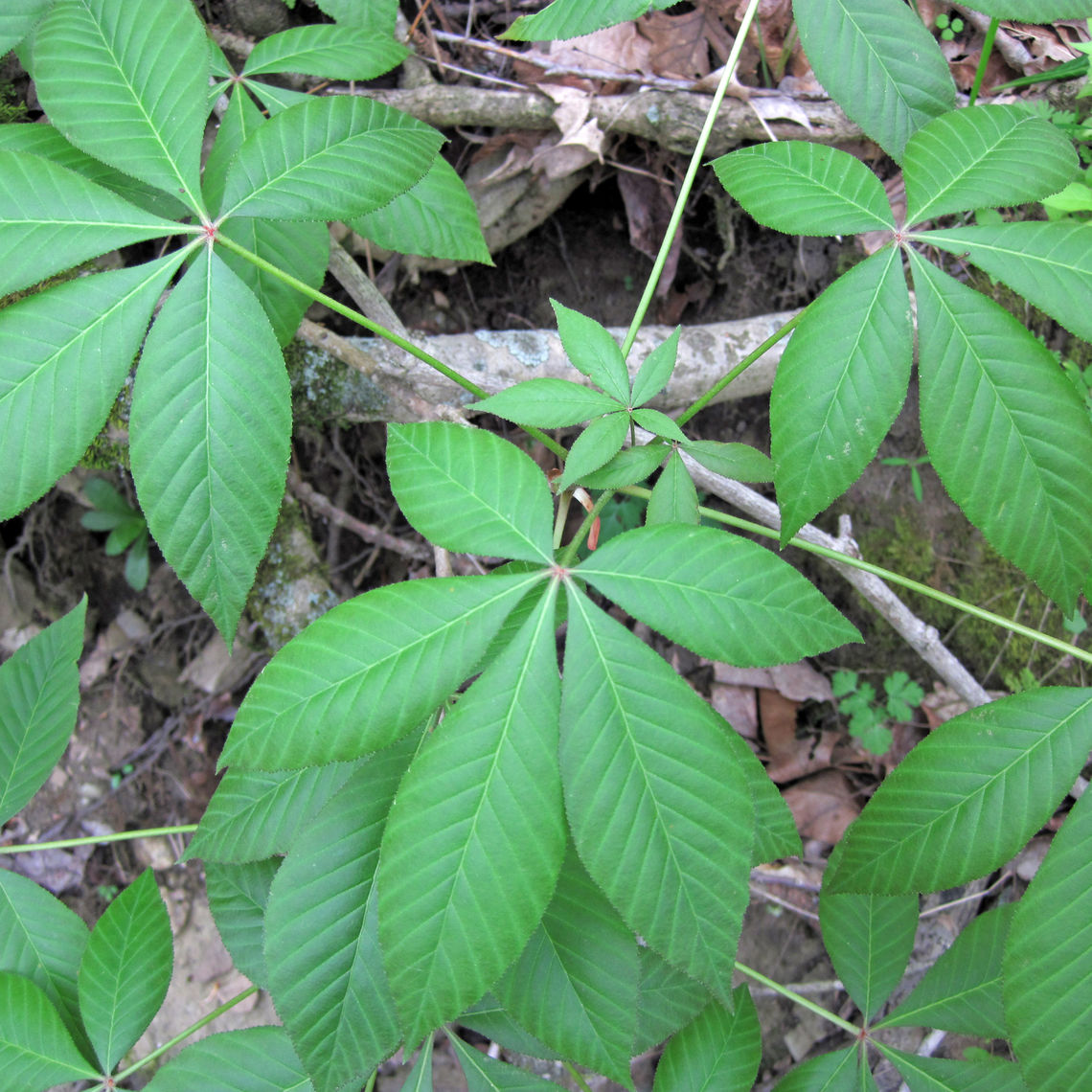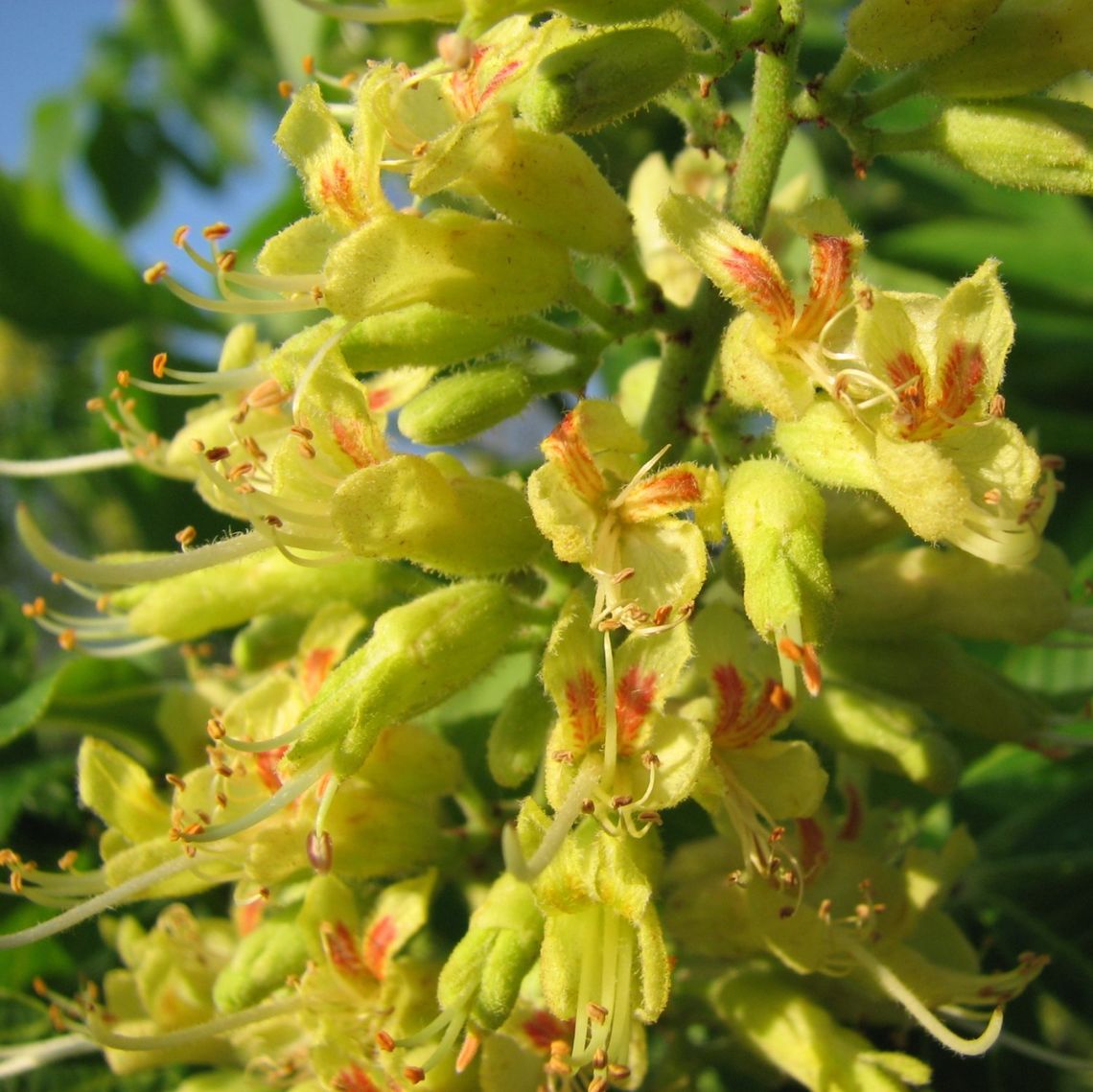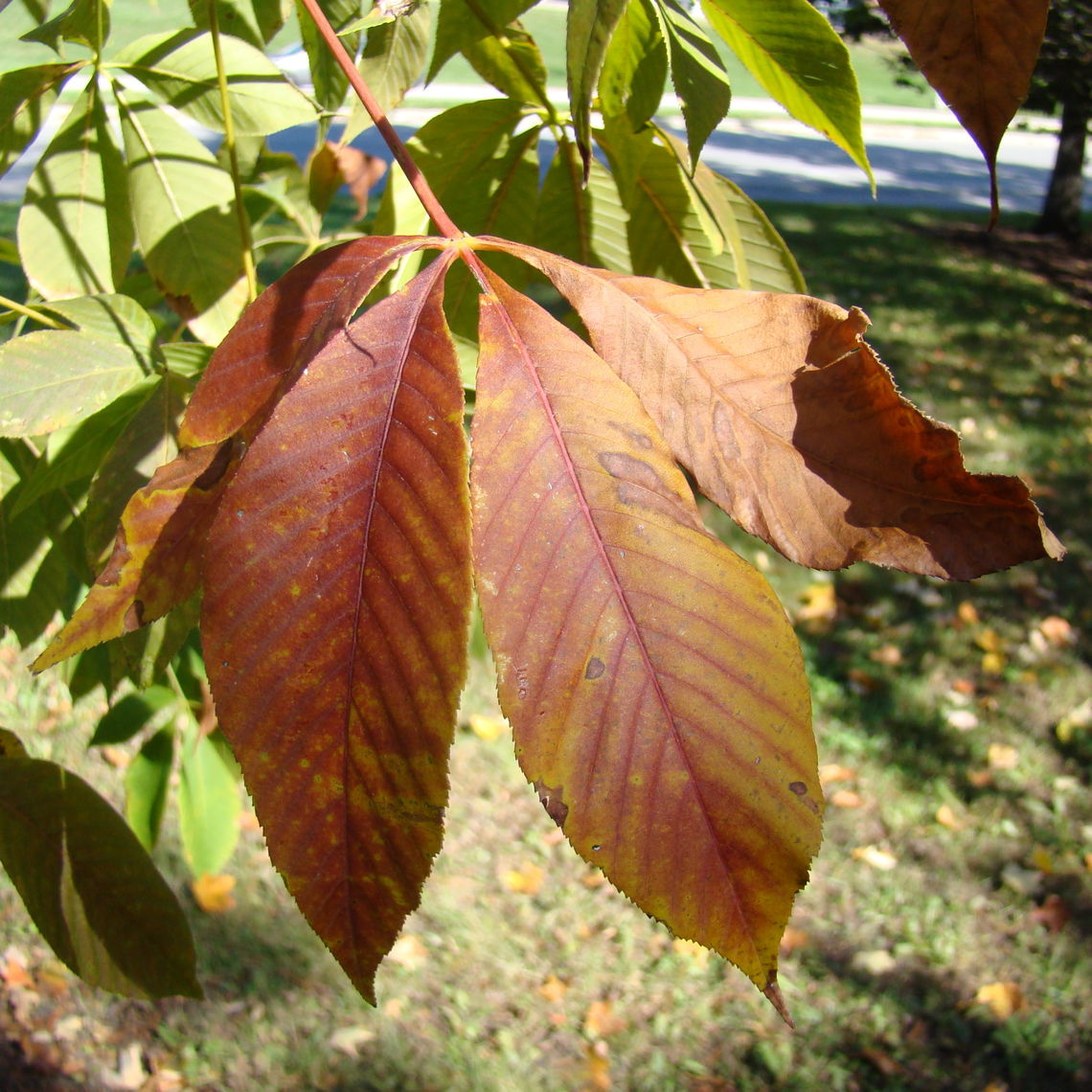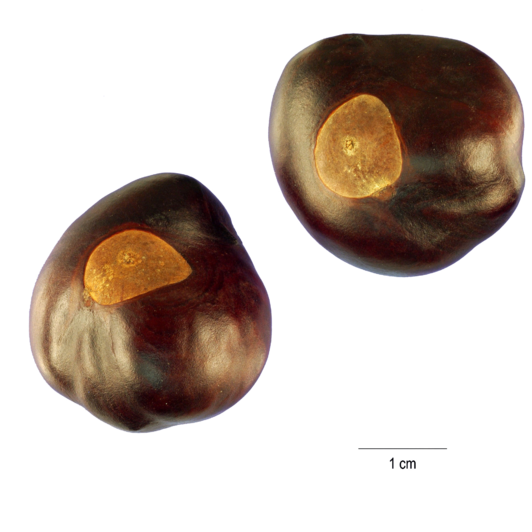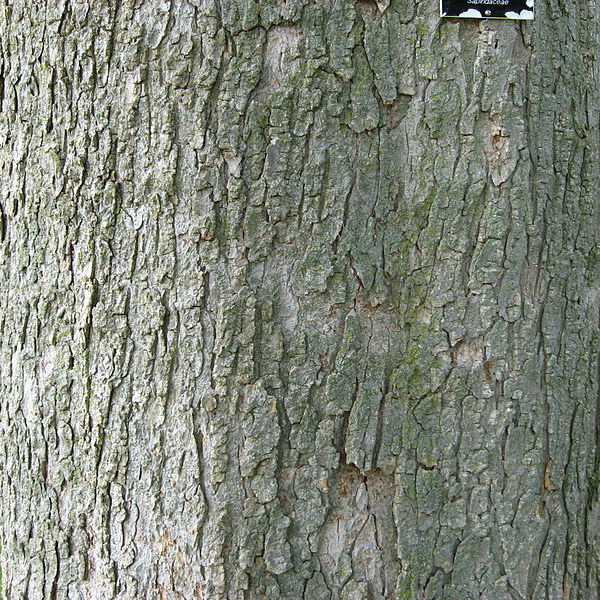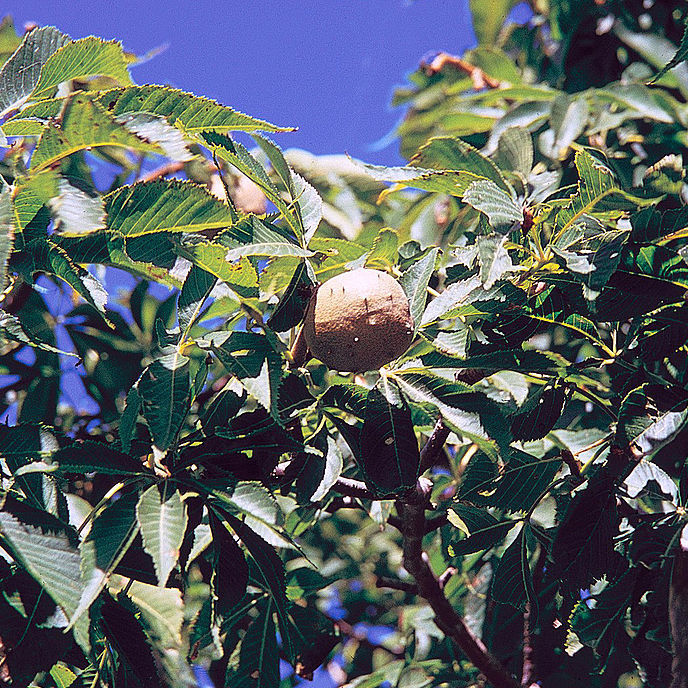Ohio Buckeye (Aesculus glabra)
The Ohio buckeye is a medium-sized tree with low lying branches that may sweep the ground. Its leaves are composed of 5-7 long teardrop shaped leaflets, which are arranged in a circular formation. The flowers, bark, and twigs of this tree give off an unpleasant odor when bruised and therefore it is sometimes also called the fetid tree. This tree produces buckeye fruits that are encased in a prickly husk. Even though these round brown buckeyes are poisonous to humans if eaten, children and adults have collected them as good luck charms for years. This tree attracts butterflies, birds, and small mammals.
Family: Sapindaceae (Soapberry)
Characteristics: The dark green, 3-inch to 6-inch-long leaves have 5-7 ovate-oblong leaflets which are palmately compound (leaves radiate from a single point). In the fall, leaves turn yellow to pumpkin-orange. In late April-May, 12-inch-long, upright clusters of yellow-green flowers appear. These flowers are followed by shiny brown buckeyes that are encased in a prickly husk. This tree has a rounded to oval-rounded shape and has low lying branches that are dense with foliage. It grows 20-40 feet high and wide.
Foliage: Deciduous (leaves lost seasonally)
Geographic Origin: Central United States (native)
Cultivation Notes: Requires medium maintenance. Does best in full sun to part shade. Prefers acidic, moist, and well-drained soils. Leaves often scorch in late summer. Buckeye trees may be difficult to transplant, due to their deep taproot.
Number on Campus: 1
Sources: Dirr, Morton Arboretum, Missouri Botanical Garden

